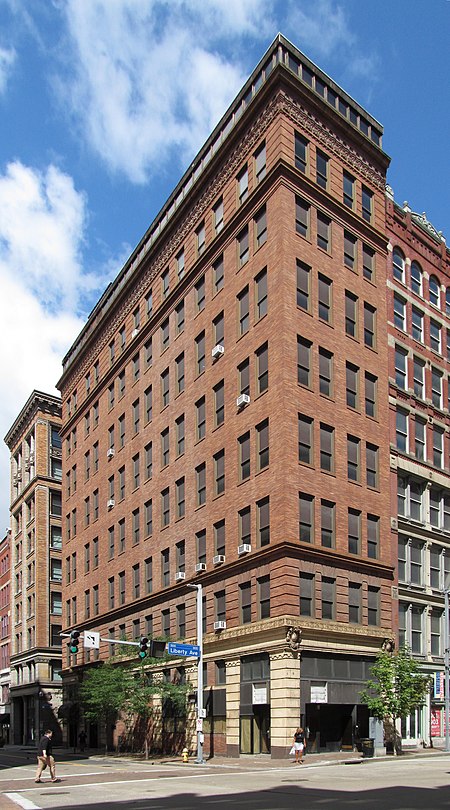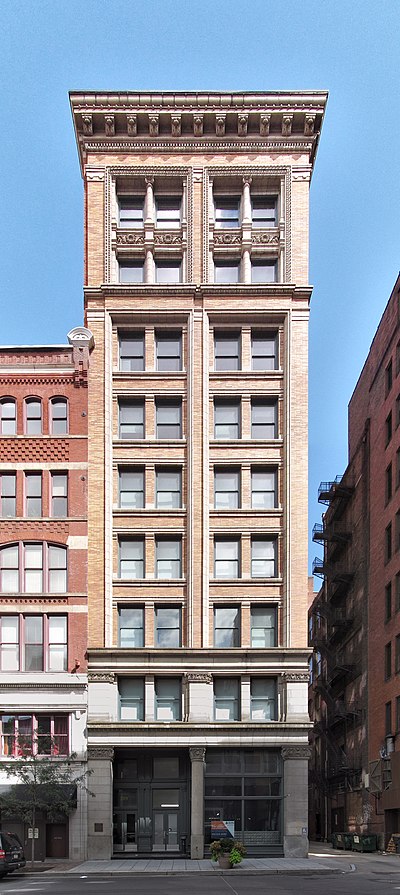
The Renshaw Building at Liberty Avenue and Ninth Street was built in 1910, with an extra floor added to the top at some time in the modernistic era. It’s a perfect miniature skyscraper, with base, shaft, cap, and the outlined bosses’ floor above the main floor. There are some good terra-cotta decorations, especially around the Ninth Street entrance.
















